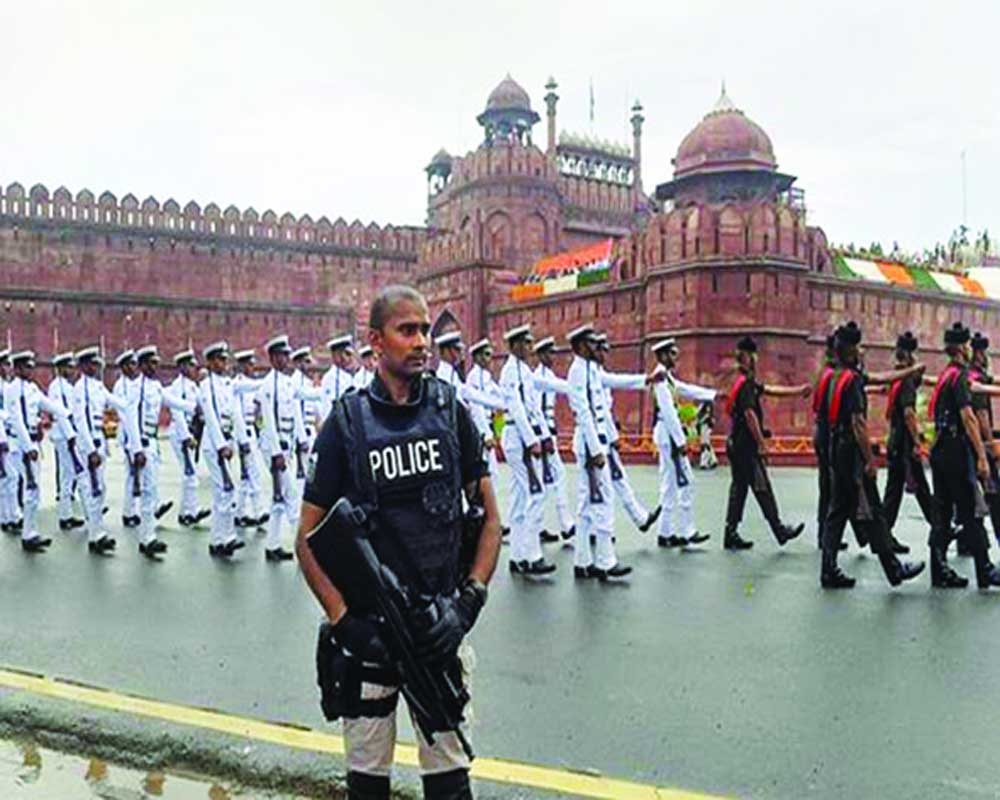Jointmanship won’t have a cascading impact unless we upgrade the basic infrastructure and tech edge of our forces
After pitching a nationalist campaign foregrounding the valour of our forces post-Balakot, the Modi 2.0 regime was considered as cold-shouldering them when it slow-pedalled their concerns on One Rank One Pension, cut their disability pension before retracting it and generally didn’t talk anything about reforms or shortage of infrastructure. So although Prime Minister Narendra Modi announced the creation of the Chief of Defence Staff (CDS) post in his Independence Day speech, it was long overdue and almost a necessity in the time of short-term, intense but technology-driven and multi-pronged warfare. What this essentially means is creating a single point-of-contact in coordinating with the three armed services to synergise functioning, training, logistics, planning and procurements among the forces and evolve a unified and targetted crisis response module. What this practically works out to is better utilisation of existing limited resources, better harvesting of intelligence for a unified approach to preparedness (the demand for CDS emerged after we were taken quite unaware in Kargil) and given the worsening nature of conflicts worldwide, build a robust expert advisory that can guide the political executive of the day on swift and decisive action. Of course, the fact that the post will become operational nearly 20 years after it was first conceived or that we are among the last nuclear weapon States to do so and well past our time, is not registering yet. The bigger question to answer is whether joint service command is allowed to function the way it should or serve to be another bureaucratic front. What our forces need to look into urgently, particularly in times of technology-driven warfare, is to upgrade fleet, equipment, weapons systems and infrastructure and manpower, the essential requisites for developing strategic depth, some of which have attained a critical mass of deficits. With a chronic crunch in funds, the lack of standardised indigenous systems and an overt focus on Army deployments, there needs to be a shift of balance to the Air Force and Navy requirements, Balakot exposing the chronic need to have state-of-the-art fighter jets. No matter how able, empowered the CDS is, it cannot take a call on such policy issues.
Have we learnt enough lessons from Kargil, where in the absence of air support, our soldiers were almost faced with hand-to-hand combat? Have we enough rifles and ammunition to save our soldiers who make for easy fodder even now? The Navy is saddled with outdated aircraft carriers. Even though India has inducted the Arihant as a nuclear submarine and has leased an Akula-class submarine from Russia, China’s navy has built a fleet of attack submarines as well as several ballistic missile submarines with which they can contain India. We have only 11 destroyers, China has 36, all commissioned after 1999 or Kargil. China may not match the smart American Navy but in a short time has emerged as the second-most powerful Navy in the world. Unrealistic planning, a socialist mindset towards protecting PSUs in the defence sector without upgrading or revamping them and corruption in defence deals have meant that we continue to be the world’s largest importer of military hardware when we should be making and customising our own. And if we could make our space programmes work, there is no reason why we cannot sharpen our defence capabilities with affordable and innovative technologies. For example, much like other advanced military nations, India has proven anti-satellite capabilities. But more resources have to be poured into research and development of military potential. There needs to be far more thought and money put into building up India’s military preparedness. Even if a war isn’t around the corner, we should not fall back decades behind and not anticipate scenarios. India’s chest-thumping nationalism will not have much dare if we don’t develop real power and build ground-up rather than a fancy imposition top-down. Our military mediocrity is the reason why even the neighbourhood is not convinced of our potential strategic weight and gets drawn by China’s assumed superiority. As the CDS decision shows, it comes after a prolonged debate on political consensus. Modi may not have a consensus problem anymore but then that consensus should now set the compass of course correction.
Writer & Courtesy: The Pioneer








 OpinionExpress.In
OpinionExpress.In















Comments (0)